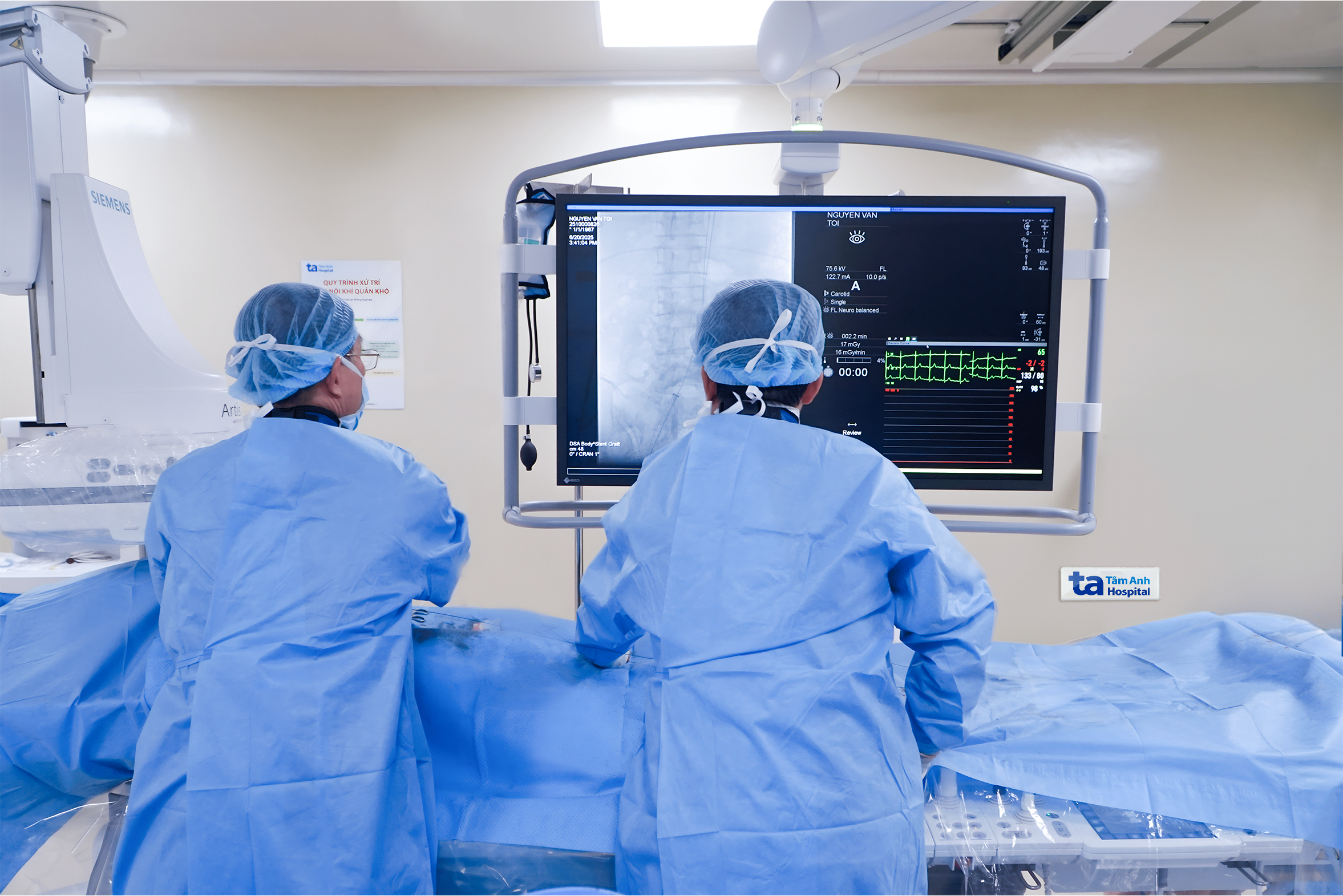Mr. Quang, with a body mass index (BMI) of 34.7, classified as class 1 obesity, also had a history of hypertension, dyslipidemia, and diabetes. For the past month, he experienced abdominal discomfort, leading to a diagnosis of an aortic-iliac aneurysm at a local hospital. He was then transferred to Tam Anh General Hospital in Ho Chi Minh City for treatment.
On 15/8, Dr. Nguyen Anh Dung, Head of the Cardiothoracic and Vascular Surgery Department, stated that Mr. Quang didn't present typical symptoms of iliac artery aneurysms such as back, lower abdominal, or groin pain. While his 45 mm aortic aneurysm didn't require immediate intervention, his iliac arteries were five times larger than normal, measuring up to 40 mm compared to the standard 8-9 mm. "The risk of rupture was high, with a survival rate of less than 10% in such cases," Dr. Dung explained.
The abdominal aorta branches into the right and left iliac arteries, supplying blood to the lower limbs and pelvic organs. An aortic-iliac aneurysm is an abnormal localized dilation of the artery wall, at least 50% larger than the normal diameter. This occurs when the arterial wall weakens, losing its ability to withstand blood pressure, leading to dilation and aneurysm formation.
The weakened and thinned arterial wall in the aneurysmal area increases the risk of rupture or dissection. These complications can cause massive bleeding or blockage, posing a life-threatening risk.
According to Dr. Dung, there are two main treatment methods for aneurysms: open surgery to remove the aneurysm or endovascular stent placement to prevent rupture. For obese patients with multiple underlying conditions like Mr. Quang, surgery is challenging due to thick layers of fat, longer operation times, and increased blood loss. Intubation is also more difficult, increasing the risk of respiratory complications and slower recovery. To mitigate these risks, doctors opted for a new-generation covered stent, which allows blood to flow through the stent while preventing it from entering the aneurysm.
 |
Dr. Dung (left) and the surgical team placing the iliac artery stent graft. Photo: Ha Vu |
Dr. Dung (left) and the surgical team placing the iliac artery stent graft. Photo: Ha Vu
The procedure was successful due to the absence of kinks, twists, calcification, or blood clots in Mr. Quang’s blood vessels. The team placed a Y-shaped stent graft into the left and right iliac arteries, preventing further expansion and rupture of the aneurysm, while restoring smooth blood flow to both legs. Mr. Quang remained conscious throughout the procedure and was discharged the next day. His abdominal discomfort subsided, and he resumed normal eating and activities. He now requires regular exercise and medication to reduce the risk of stent narrowing or blockage.
Aneurysms often result from various factors that weaken the arterial wall over time. The primary culprits are atherosclerosis, hypertension, and lifestyle choices (smoking, excessive alcohol consumption, unhealthy diet, lack of exercise). Some genetic conditions, like Marfan syndrome and Ehlers-Danlos syndrome, weaken the arterial wall, increasing the risk of aneurysms. Trauma, vascular infections, and vasculitis can also contribute to aneurysm development.
Regular check-ups and screenings can help detect aneurysms early. Seek immediate medical attention if you experience sudden and severe chest pain, dizziness, lightheadedness, abdominal pain around the navel, or a rapid heart rate. To reduce your risk, avoid smoking, control blood pressure and cholesterol levels, maintain healthy blood sugar levels, manage your weight, and undergo regular health check-ups.
Thu Ha
*The patient's name has been changed.
| Readers can submit questions about cardiovascular diseases here for doctors to answer. |












